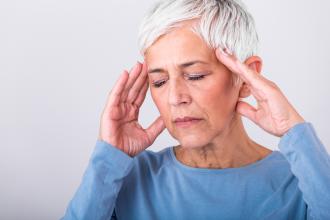Noise-induced hearing loss: A preventable condition
Although hearing loss can occur when exposed to loud noise over a period of time, it is generally considered that listening to noise at 85 to 90 decibels (dB) for 8 hours could hurt your hearing.

Although hearing loss can occur when exposed to loud noise over a period of time, it is generally considered that listening to noise at 85 to 90 decibels (dB) for 8 hours could hurt your hearing. For context, a telephone dial tone measures 80 dB and a power saw registers at 110 dB.
When we engage in safety and health promotion activities, there are always some who counter by stating individual freedoms and choice are being thwarted--even when there are proven benefits of using such things as seatbelts and bicycle helmets, and when presented with increasing evidence showing how repeated concussions cause chronic traumatic encephalopathy. But how can someone, especially a child, make decisions with informed consent when they can’t know the consequences?
I enjoy live music and notice how much variability in volume there is between different concerts. Perhaps it is time to challenge concert reviewers to take a sound level meter to concerts and put the measurement results in their review. Louder is not better! I love the music of Leonard Cohen and have attended his concerts which, when measured, were about 95 dB--concerts do not get much better than his.
Many rock concerts can be in the 110 to 120 dB range. January’s Mötley Crüe concert in Victoria was reportedly painful to the ears of arena crew wearing professional-quality hearing protectors. A reviewer said, “This concert was comprised with the predominant 20 to 35 crowd, but some parents brought their younger ones and by doing so were ushering in a new generation to the legacy of Mötley Crüe. I was shocked to see little 8-year-olds with their dads standing in the pit rocking out to the band.”
I am concerned that when these children become parents themselves, they may not be able to hear their baby crying. Apart from possible ignorance of these parents, I wonder what the liability risks might be for municipalities, or concert promoters, that ignore this serious hazard to public health.
Peter Rabinowitz, MD, from Yale states that, “Hearing loss caused by exposure to recreational and occupational noise results in devastating disability that is virtually 100% preventable.” How common is it? Of the more than 30 million North Americans with some degree of hearing impairment, one-third have acquired the problem from exposure to excessive noise.
Ten years ago, evidence of high-frequency hearing loss was present in one-third of a cohort of college students--and this was before the 2001 launch of the very popular portable media players. A more recent study found a 45% prevalence of noise-induced hearing loss (NIHL) among music students.
What is NIHL like? Apart from the reduced enjoyment of music, singing, and conversation with family and others, there is continual stress as a result of the impairment. Sudden loud noises are no longer buffered as well and, frequently, distracting tinnitus accompanies the NIHL.
There are safety issues, too--an inability to hear alarms, telephones, doorbells, or warning shouts, and great difficulty in determining the direction of sound sources, including sirens.
Socially, there is the embarrassment from not hearing conversations accurately, or having to frequently ask others to repeat themselves or speak louder. It becomes more difficult in groups--harder to discriminate an individual’s voice from background noise--the person with NIHL may then avoid these situations and miss out on socialization. Social isolation is not good for maintenance of cognitive function and may contribute to depression.
Evidence suggests that there is considerable variability in the susceptibility to NIHL. It is unclear why. Concurrent exposure to ototoxic compounds and some forms of chemotherapy clearly increases risks--how often is the patient informed of this?
Because recovery from temporary threshold shifts (from transient hair cell dysfunction) is common, we can be lulled into a false sense of security that we will rebound every time--but we may not, no matter our age.
Is there any good news here? What about a possible “morning after pill” to reduce or prevent NIHL? On 21 February of this year, Jianxin Bao, PhD, presented a study at the Association for Research in Otolaryngology meeting in Baltimore.
His research on mice demonstrated how combined low doses of zonisamide (an anticonvulsant) and methylprednisolone (a glucocorticoid) not only reduced the risk of NIHL when given in advance of exposure to 110 dB noise, but worked effectively in treatment of mice when given within 24 hours of noise exposure. While the drugs did not prevent all hearing loss from the sustained exposure to loud noise, they did significantly reduce the loss by about 10 to 30 decibels.
If this turns out to be a new type of post-risk exposure treatment for patients, its use will clearly not be a substitute for consistent prevention practices, but it might give someone another chance to preserve his or her hearing. Meanwhile, let’s find some better ways to work on prevention of NIHL by education and advocacy.
--Ian Gillespie, MD
BCMA President

